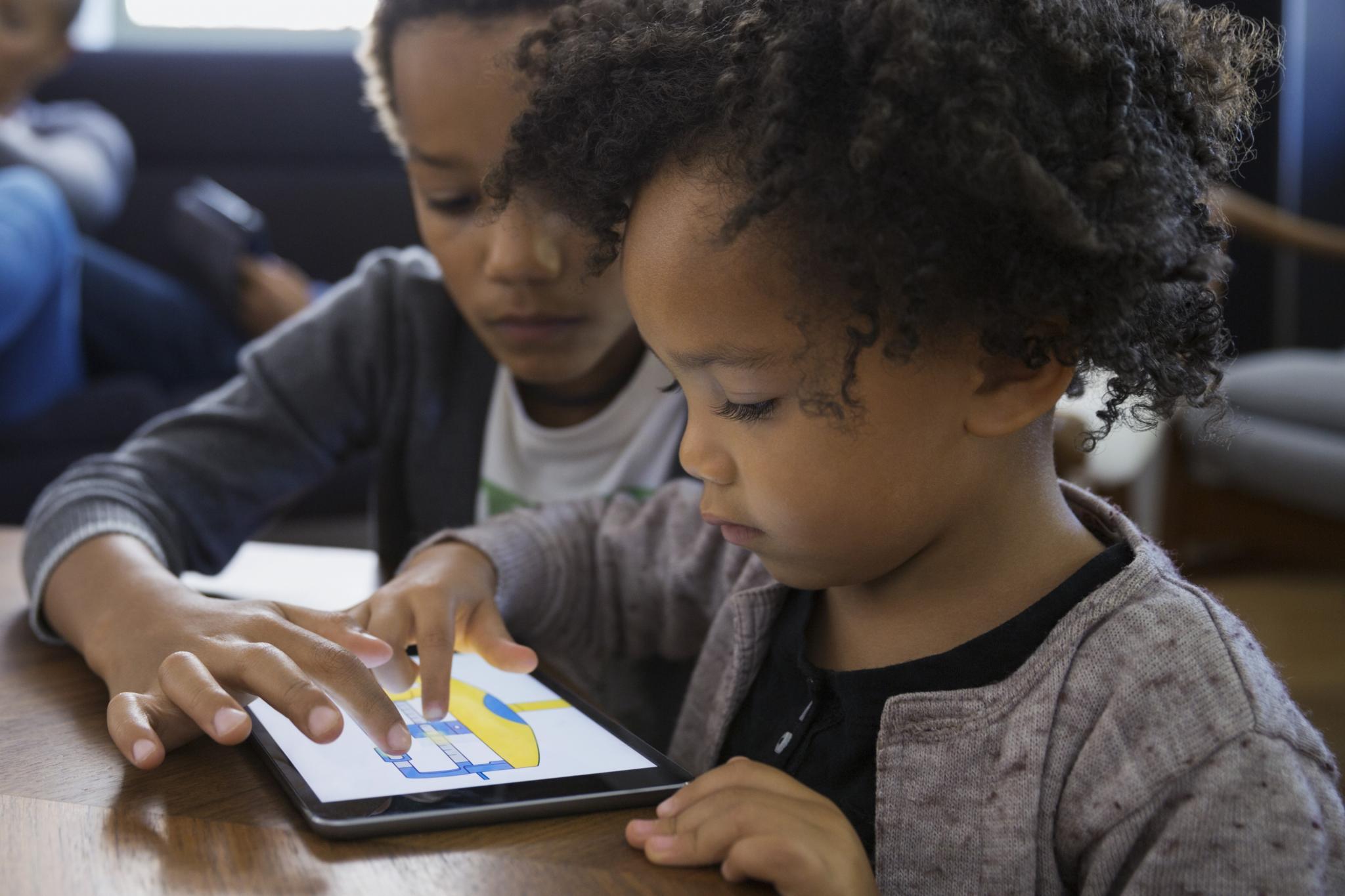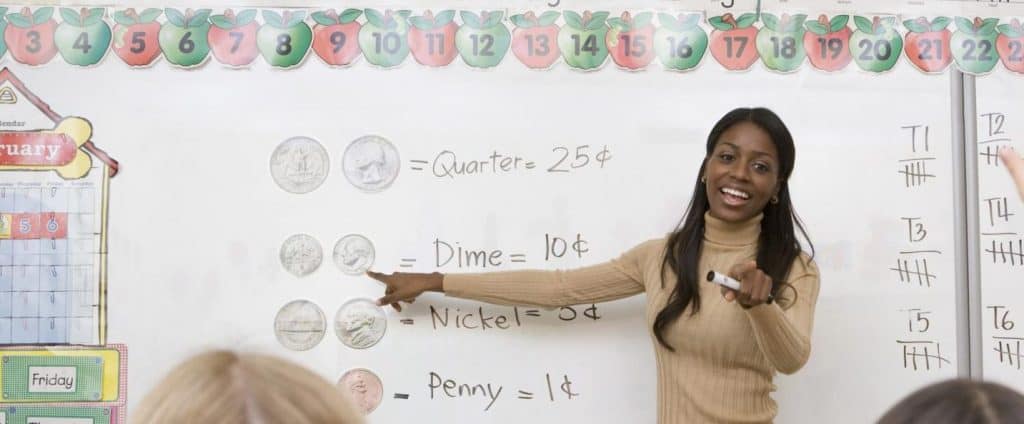One of the larger issues that educators face is how to best motivate their students.[9] Once a student discovers how enjoyable it can be to learn about math, reading, or science, teachers can often help them develop a lifelong love of learning. But until that point, getting students interested in a new topic can be tough.
Enter gamification, a learning technique that uses activities and rewards to promote student engagement. When used to promote a love of learning, this strategy can help students become active and motivated learners. But when coupled with non-educational rewards like pizza parties or treats, gamification can make students lose sight of the purpose of school: to help them learn.
What do educators mean by game-based learning, and how can you use it to its fullest potential? Read on to learn about gamification as a learning strategy and how to create game-based activities that avoid the common mistakes that make it less effective.
What is Gamification?
 Gamification is a hot-button topic in the educational field, with plenty of advocates and critics. But what is gamification itself, and why has it become so popular?
Gamification is a hot-button topic in the educational field, with plenty of advocates and critics. But what is gamification itself, and why has it become so popular?
Gamification is defined here as the use of activities and external rewards to encourage motivation in non-game contexts. It’s designed to increase a person’s experience and engagement with a course, goal, or system.[5]
How gamification works: Gamification traces its origins to educational psychology and what motivates people to learn. Sometimes, finding the resolve and perseverance to complete a difficult task can be tough. Gamification motivates people by making the process more enjoyable. As a person engages more with a course or project, their positive feelings towards the experience increase and they’re more likely to continue engaging on their own.[6]
Gamification as a practice has seen significant growth over the past decade in areas like health care and the workplace.[7] And with an increased acceptance of technology in class, gamified learning has also become a popular teaching strategy.[4] But like any strategy, gamification has its pros and cons when used in schools.
A few examples of gamification include:
- Earning virtual “points” for completing tasks
- Playing educational games to learn academic skills
- Competing with peers on a leaderboard towards a goal
Educational Trends: Game-Based Learning
Game-based learning refers to a classroom reward system that can help students nurture a love of learning from the start. By using activities to teach new concepts, teachers can help a child transition from learning solely to succeed in school to learning for its own sake.[5] Sometimes, an initial game or goal is the key to unlocking a child’s inner fascination with a subject.
One of the best advantages of gamification is that it encourages students to be active learners.[9] By increasing a student’s attention span for an assignment and encouraging participation, game-based activities are more likely to help students retain knowledge.[2] Over time, this leads to learning as a motivation in itself for students instead of being lured only by games or rewards.[3]
Research suggests that gamification can also make assignments less intimidating for students prone to stress.[12] As you use activities to teach a subject, students learn to associate learning with curiosity and joy instead of fear. Without the added stress, these students are better prepared to participate and succeed in school.
In a nutshell, the benefits of game-based learning include:
- Strengthens motivation to learn
- Encourages active learning
- Increases attention span
- Reduces student stress
Avoiding Common Pitfalls of Gamification in Education
 When used incorrectly, gamification in the classroom can make students motivated by rewards and disinterested in the learning process– exactly the opposite of the desired outcome. To avoid this, it’s important to understand the difference between intrinsic and extrinsic motivation.
When used incorrectly, gamification in the classroom can make students motivated by rewards and disinterested in the learning process– exactly the opposite of the desired outcome. To avoid this, it’s important to understand the difference between intrinsic and extrinsic motivation.
Intrinsic motivation happens when students enjoy learning for its own rewards, like the excitement of understanding a new concept or discovering a new skill. Extrinsic motivation, on the other hand, occurs when students are motivated by external rewards or punishments. The positive effects of gamification occur more when teachers prioritize intrinsic motivation as they plan learning activities[2]
As a teacher, you can help prevent students from becoming extrinsically motivated by choosing intrinsic rewards.[8] Instead of class pizza parties, for example, try brainstorming rewards that help students develop a passion for academic subjects.[14] That way, they associate the fun parts of game-based learning with reading, math, or other skills.
Here are a few reward ideas for your students that encourage intrinsic motivation:
- Field trip
- Picture or chapter book
- Student talent show
- Handwritten card from teacher
- In-class quiet time
How to Gamify Your Classroom to Encourage Student Engagement
As long as you know how to use it, gamification can be a real game changer (pun intended!) for your students. When they promote intrinsic motivation, game-based activities can increase student engagement, create active learners, and prevent student stress.
Here are five gamification strategies you can use in your class to help your students find a love of learning while avoiding extrinsic motivation:
- Instead of class worksheets, assign students “quests” to learn about a new subject or complete a project.[10]
- Use team-building games like Jeopardy to study as a class before a test.[12]
- Instead of class parties or treats, have students earn points towards a class field trip by behaving and doing their assignments.[13]
- Pair subjects that a student struggles with or dislikes with fun books or activities to encourage motivation.
- If you’re having a hard time getting your class invested in learning, talk with them together or individually about what motivates them as a student and incorporate it into your student engagement strategies.[11]
Sources:
Dicheva, D., Agre, G., Dichev, C., and Angelova, G. Gamification in Education: A Systematic Mapping Study. Educational Technology and Society, July 2015, 18(3), pp. 75-88.[1]
Barata, G., Gama, S., Jorge, J.P., Gonçalves, D. Improving Participation and Learning with Gamification. Proceedings of the 1st International Conference on Gameful Design, Research, and Applications, October 2013, pp. 10-17.[2]
Buckley, P., and Doyle, E. Gamification and student motivation. Interactive Learning Environments, April 2016, 24(6), pp. 1162-1175.[3]
Brigham, T.J. An Introduction to Gamification: Adding Game Elements for Engagement. Medical Reference Services Quarterly, 2015, 34(4), pp 471-480.[4]
Surendeleg, G., Murwa, V., Yun, H., Kim, Y.S. The Role of Gamification in Education: A Literature Review. Contemporary Engineering Sciences, 2014, 7(29), pp. 1609-1616.[5]
Nah, F.F., Telaprolu, V.R., Rallapalli, S., and Venkata, P.R. Gamification of Education Using Computer Games. International Conference on Human Interface and the Management of Information, 2013, pp. 99-107.[6]
Rojas, D., Kapralos, B., and Dubrowski, A. The missing piece in the gamification puzzle. Proceedings of the First International Conference on Gameful Design, Research, and Applications, 2013, pp. 135-138.[7]
Richards, C., Thompson, C.W., and Graham, N. Beyond designing for motivation: the importance of context in gamification. Proceedings of the First ACM SIGCHI Annual Symposium on Computer-Human Interaction in Play, October 2014, pp. 217-226.[8]
Glover, I. Play As You Learn: Gamification as a Technique for Motivating Learners. Retrieved from shu.ac.uk: https://shura.shu.ac.uk/7172/1/Glover_-_Play_As_You_Learn_-_proceeding_112246.pdf/.[9]
Kolb, L. Epic Fail or Win? Gamifying Learning in My Classroom. Retrieved from edutopia.org: https://www.edutopia.org/blog/epic-fail-win-gamifying-learning-liz-kolb [10]
Cook, A. Five Reasons You Can’t Ignore Gamification. Chief Learning Officer, May 2013, pp. 46-55.[11]
Ryerson University Learning and Teaching Office. Teaching with Gamification. Retrieved from ryerson.ca: https://www.ryerson.ca/content/dam/lt/resources/handouts/gamification.pdf.[12]
Coetail and Eduro Learning. 3 Ways to Gamify Your Classroom. Retrieved from edurolearning.com: https://edurolearning.com/wp-content/uploads/woocommerce_uploads/2018/02/3-Ways-to-Gamify-Your-Classroom.pdf.[13]
Papp, T.A. Gamification Effects on Motivation and Learning: Application to Primary and College Students. International Journal for Cross-Disciplinary Subjects in Education, September 2017, 8(3), pp. 3193-3201.[14]

